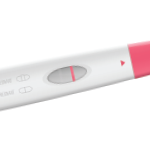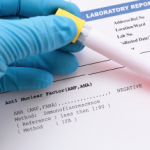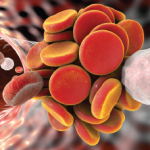For patients with lupus, family planning discussions are vital to achieving positive pregnancy outcomes & maintaining overall health…


For patients with lupus, family planning discussions are vital to achieving positive pregnancy outcomes & maintaining overall health…

A recent study from Brazil suggests lupus nephritis patients who receive renal transplant have a high five-year survival rate. Researchers found the presence of venous thrombosis and antiphospholipid syndrome, but not viral infection, were important predictors of renal graft loss in these patients…
Megan Brooks |
NEW YORK (Reuters Health)—Changes in atmospheric and environmental factors may contribute to organ-specific disease exacerbation in patients with systemic lupus erythematosus (SLE), according to a new study. The study found “strong associations between atmospheric variables and fine particulate matter concentration over the 10 days prior to a patient visit and organ-specific lupus flares at the…

The new EULAR/ACR classification criteria for SLE offer improved sensitivity and specificity, as well as more accurately reflect the current tests used to clinically diagnose SLE. A positive ANA test is obligatory…

A recent study in The Journal of Rheumatology sheds light on the importance of preconceptional cardiovascular health in women with systemic lupus erythematosus. Although many questions remain, improved cardiovascular health measures seem to positively affect pregnancy outcomes, suggesting a potential role for preconception cardiovascular interventions.1 Women with lupus now have healthier pregnancies than in the…

Catherine Kolonko |
How laboratories define a serological hallmark of systemic lupus erythematous and which assays they use to detect it could contribute to misclassification of patients identified as anti-nuclear antibody (ANA) negative, according to researchers. Most people who have lupus test positive for ANAs as part of an immunology screening for autoimmune disorders. The presence of ANAs…

According to new research, women with SLE are at the highest risk for adverse pregnancy outcomes during a lupus flare. The data may enable clinicians to use risk stratification and tailored monitoring to counsel SLE patients who are pregnant or considering pregnancy. Researchers also found that maternal age, lupus nephritis and antiphospholipid antibodies may affect pregnancy outcomes…

As the 21st century unfolds, rheumatologists will most likely transition from prescribing lupus patients broad immunosuppressants to more targeted treatment approaches. But to make this happen and advance research, the challenges experienced in lupus clinical trial design must be addressed…

Catherine Kolonko |
When patients with lupus are hospitalized, they should be screened and likely treated for venous thromboembolism, researchers of a nationwide study say. In May, ACR Open Rheumatology published results of the large retrospective study spanning several years. Researchers analyzed trends in mortality, morbidity and hospitalization from venous thromboembolism (VTE), specifically among patients diagnosed with systemic…

Hydroxychloroquine (HCQ) therapy may effectively manage systemic lupus erythematosus (SLE) in many patients, but that doesn’t mean patients will take it as often as they should. In fact, results from a recently published study found that about half of SLE patients were not adherent.1 The study was led by Lucy H. Liu, MD, MPH, a…